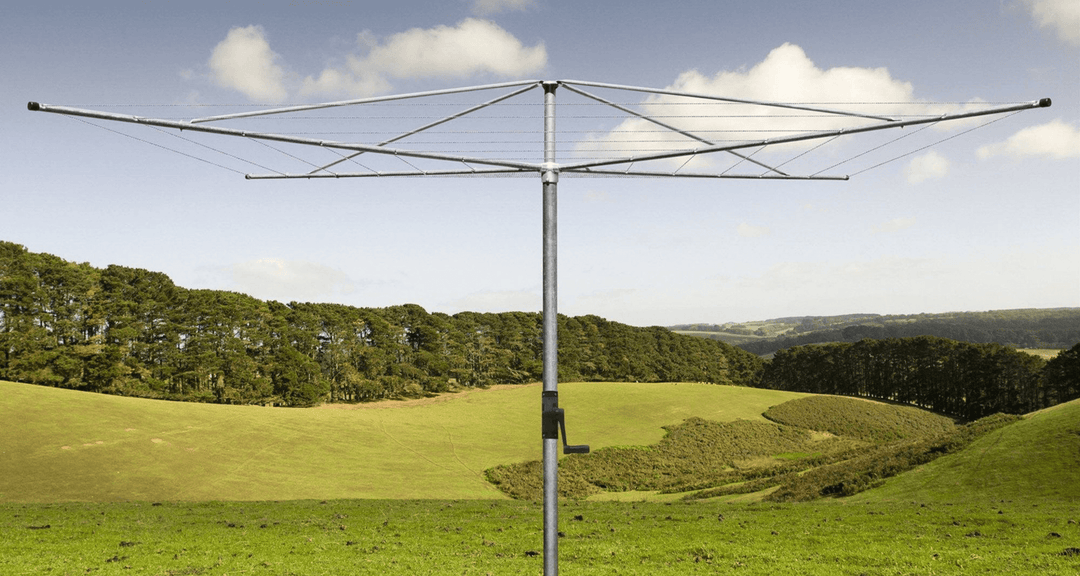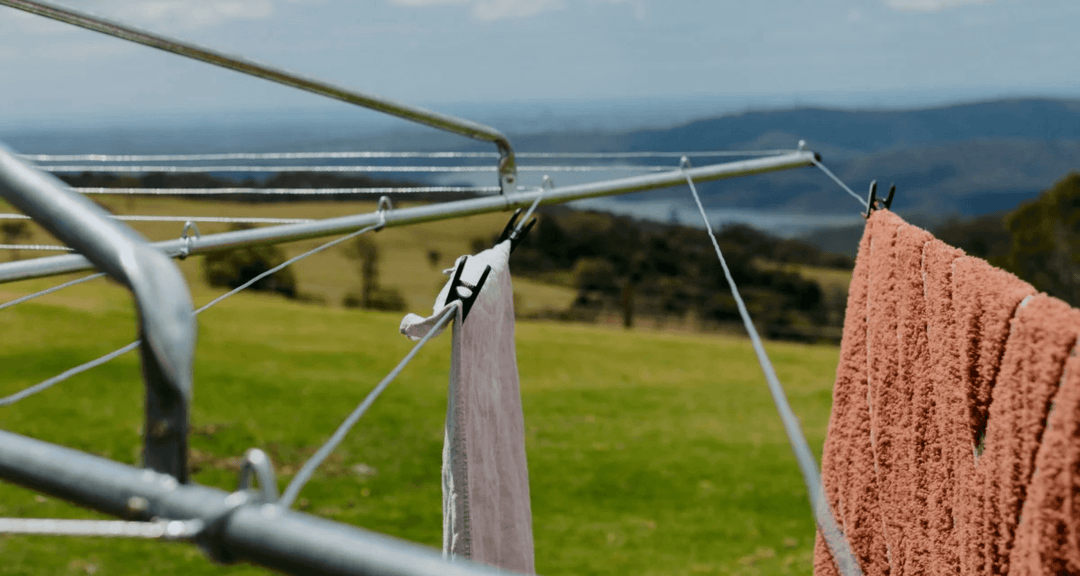How Much Laundry Detergent Should I Use?
When tackling the laundry pile in Australia, knowing “how much laundry detergent should I use when doing laundry" is crucial for both clean clothes and machine care.
In this article, we provide clear guidance tailored to Australian conditions, addressing load size, water hardness, and machine type to ensure optimal cleanliness without waste.
Get ready to discover the precise detergent measurements for both front and top loaders that will transform your laundry routine by answering the question: how much laundry detergent should I use when doing laundry?
Short Summary
-
The optimal amount of laundry detergent depends on load size, water hardness, soil level, and washing machine type, with specific guidelines for use in Australia.
-
Laundry detergents come in various forms, including powder, liquid, and sheets, each designed for different washing needs, machine types, and preferences.
-
Determining the correct detergent quantity is essential for preventing issues such as residue buildup or inadequate cleaning, and using eco-friendly or sensitive skin detergents can reduce environmental impact and skin irritation.
Topics in This Article:
Determining the Right Amount of Laundry Detergent
Several factors influence the amount of laundry detergent needed to achieve a perfect wash.
These include:
-
The size of the laundry load
-
The hardness of your water
-
The soil level of your clothes
-
The type of washing machine you use

Understanding these factors can help you optimise your laundry routine, ensuring clean clothes and efficient use of resources.
Load Size
The size of your laundry load heavily impacts the amount of detergent needed.
For smaller loads or a half load, you’ll need less detergent, while larger loads will require more.

This ensures that all your clothes get thoroughly cleaned, without leaving residues or wasting detergent.
Whether you’re using top loaders or front loaders, adjusting the detergent amount to your load size is crucial.
Water Hardness
Your water hardness can significantly affect the effectiveness of your laundry detergent.
Hard water may require more detergent to achieve the same level of cleanliness.

On the other hand, if your water is soft, less laundry detergent is needed.
So whether you’re dealing with hot water, warm water, or cold water, considering water hardness when determining detergent amount is essential for optimal washing results.
Soil Level
The soil level of your laundry determines how much detergent you’ll need to use.
Heavily soiled laundry may require an extra scoop or half of powder detergent to ensure thorough cleaning.
However, using too much laundry powder can lead to residue on your clothes.

For these stubborn stains, try turning your powder detergent into a paste with hot water to pre-treat the stained areas before the main wash.
By properly separating items by soil level before washing, you ensure your detergents work more efficiently.
Machine Type
Your washing machine type plays a significant role in determining the required amount of detergent.
Most laundry detergents are formulated to be compatible with both top-loading and front-loading washing machines, with specific usage instructions for each.

Whether it’s a front loader or top loader, knowing the correct method to add your washing powder ensures effective cleaning and optimal washing performance.
Types of Laundry Detergents: Powder, Liquid, and Sheets
There’s a wide range of laundry detergents available in the market today, each offering unique properties and advantages.
These include powder detergents, liquid detergents, and laundry sheets.

Understanding the characteristics of each type can help you make an informed choice that suits your washing needs and preferences.
Powder Detergents
Washing powders are a popular choice for many because:
-
They allow for precise measuring, leading to cost savings and prevention of overuse.
-
They are effective in removing tough stains.
-
They work well in high-efficiency (HE) washing machines.
-
They are generally more affordable than liquid detergents.

However, one of their main drawbacks is that they may not fully dissolve in cold water, resulting in residue on clothes.
Despite this, they are highly effective when used within six months of opening, providing an efficient cleaning solution for both front loaders and top loaders.
Liquid Detergents
Liquid detergents, such as liquid laundry detergent, offer versatility and are suitable for various washing needs.
They are particularly recommended for front-loaders using eco programs or with high-efficiency that use very little water.

While they may be more costly than powder detergents, they are less expensive than laundry pods, providing a middle-ground option for consumers.
Laundry Sheets
Laundry sheets, acting as a fabric softener, are an alternative solution that can prevent detergent buildup.
These sheets offer convenience and are easy to use, making them an attractive option for those who prefer a fuss-free laundry process.
You can try these fragrance free laundry sheets for sensitive skin.
Australian Washing Machine Guidelines
In Australia, there are specific guidelines for washing machine usage and detergent dosage.
These guidelines ensure proper detergent usage, optimal cleaning results, and the longevity of your washing machine.

They also take into account the increasingly concentrated products available in the market today.
Front-Loader Washing Machines
Front-loader washing machines in Australia typically require about 30 grams of laundry detergent, roughly half the amount needed for top-loaders.
Using top-loading detergents in a front-loader can result in foam buildup between the inner and outer drums, potentially causing the washer to burn out.

Therefore, it’s essential to use the correct detergent type specifically designed for front-loader washing machines.
Top-Loader Washing Machines
In Australia, standard top-loader washing machines usually require around 60 grams of detergent for a single load.
This amount is generally sufficient to clean the clothes effectively.
These machines offer the convenience of adding clothes during a cycle, which can be advantageous for managing detergent usage.

So, if you’re wondering how much laundry detergent to use, stick to the recommended 60 grams for optimal results in your top loader washing machines.
When using laundry powder, it should be added to the machine bowl or down the center of the agitator for optimal detergent distribution.
Troubleshooting Detergent Issues
Laundry days can sometimes feel like a puzzle, especially when figuring out the right amount of detergent to use.
Use too much, and you might find your clothes stiff with residue; use too little, and they come out looking like they've been on a dirt marathon.
Recognising these telltale signs can guide you to the sweet spot of detergent usage.

It’s all about striking a balance that keeps both your wardrobe and washing machine in top-notch condition.
So, let’s decode the laundry lingo and get your clothes clean without any hiccups!
Overdosing Detergent
Using too much detergent can lead to several issues, from reduced cleaning effectiveness to skin irritation and even damage to your washing machine.
Some signs of overdosing detergent include residues on clothes after washing and within the washing machine.

By reducing the dose of laundry detergent used, you can correct this issue and prevent future occurrences.
Underdosing Detergent
On the flip side, using an insufficient amount of laundry detergent can result in clothing that feels unclean and looks dingy.
Clothes may retain stains or soil when not enough detergent is used, especially in the case of heavily soiled items.

By adjusting the amount of detergent to suit the soil level and type of clothing, you can achieve effective cleaning and maintain the longevity of your garments.
Eco-Friendly and Sensitive Skin Solutions
In the pursuit of spotless garments, selecting eco-friendly and sensitive skin detergents is essential.
These products reduce environmental harm and are formulated to be gentle on the skin, avoiding irritation.
They offer a sustainable cleaning alternative without sacrificing effectiveness.

By choosing these detergents, we do our part for the planet while caring for our skin.
It's a clean and conscientious choice for anyone's laundry regimen.
Environmentally Friendly Detergents
Environmentally friendly detergents are a great choice for those looking to reduce their environmental impact.
These detergents have low or no phosphorus content and use sustainable ingredients, making them a responsible choice for our planet.

Despite being eco-friendly, these detergents do not compromise on cleaning power, often matching or even surpassing the performance of regular detergents.
Detergents for Sensitive Skin
For those with allergies or skin sensitivities, detergents designed for sensitive skin can be a game-changer.
These detergents are free from enzymes, optical brighteners, and other irritants that could cause skin reactions.

They provide an effective cleaning solution while ensuring the comfort and health of your skin.
Tips for Maximising Laundry Efficiency
Maximising laundry efficiency is not only about using the right amount of detergent.
It also involves properly sorting and loading your clothes, adjusting temperature settings, and maintaining your washing machine regularly.

Let’s dive into these areas more deeply.
Proper Sorting and Loading
Sorting your laundry by colour and fabric type can significantly improve your washing results and extend the life of your clothing items.
Avoid overloading your washing machine, as this allows your clothes to move and interact with the detergent effectively.

Whether you have front loaders or top loaders, proper sorting and loading are essential for optimal cleaning.
Temperature Settings
Adjusting your washing machine’s temperature settings can also boost laundry efficiency.
Hot water is ideal for whites, enhancing detergent effectiveness and ensuring thorough cleaning.
For coloured garments, warm or cold water is recommended to prevent fading and maintain colour integrity.

Always consider the fabric type when selecting the water temperature to avoid damage.
These guidelines help optimise cleaning while protecting your clothes.
Regular Washing Machine Maintenance
Regular maintenance of your washing machine can significantly enhance its efficiency and longevity.
Here are some steps to follow:
-
Clean your washing machine at least once a month to prevent detergent buildup.
-
Wipe the interior of the machine with a damp cloth.
-
Run a hot wash cycle with detergent.
-
Rinse the empty machine with plain water.

By following these steps, you can keep your washing machine in good condition.
Regular maintenance ensures that your machine operates at its best, delivering clean laundry every time.
Frequently Asked Questions
You should use two tablespoons of 2X concentrated liquid detergent for a regular-sized laundry load in a standard washer.
This will be sufficient for effective cleaning.
The main difference between powder and liquid detergents is that powder detergents are cost-effective but may leave residues, while liquid detergents are versatile and dissolve well in any water temperature.
Therefore, the choice between the two depends on your specific needs and preferences.
If you notice residues on clothes and in the washing machine after washing, it is a sign that you are using too much detergent.
Adjust the amount to prevent this issue.
Choosing eco-friendly detergents with low or no phosphorus content and sustainable ingredients can help reduce environmental impact while still providing effective cleaning.
You should use a detergent designed for sensitive skin, which is free from irritants and provides effective cleaning without causing skin reactions.
This will ensure the comfort and health of your skin.
Final Words
In conclusion, achieving an efficient and effective laundry routine involves more than just tossing clothes into a machine.
It requires a clear understanding of how much detergent to use, the type of detergent that suits your needs, adherence to washing machine guidelines, and regular maintenance of your machine.
By following these tips and taking into account the unique factors of your laundry situation, you can maximise your laundry efficiency...
...extend the life of your clothes, and contribute to a more sustainable environment.
Disclaimer:
This article contains affiliate links and we may earn a small commission from purchases made through them. Your support helps sustain our blog and allows us to consistently provide valuable content for you. Thank you for your understanding.
 Fold Down
Fold Down

 Rotary Hoist
Rotary Hoist
 Retractable
Retractable
 Portable
Portable
 Ceiling Airer
Ceiling Airer
 Covers
Covers














